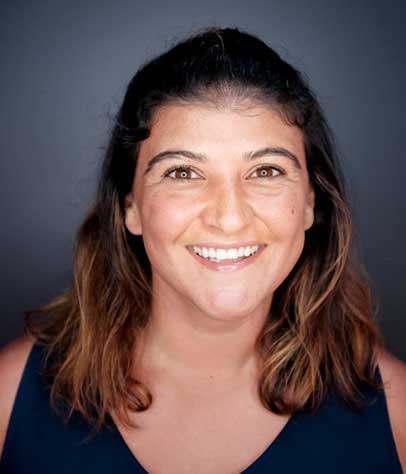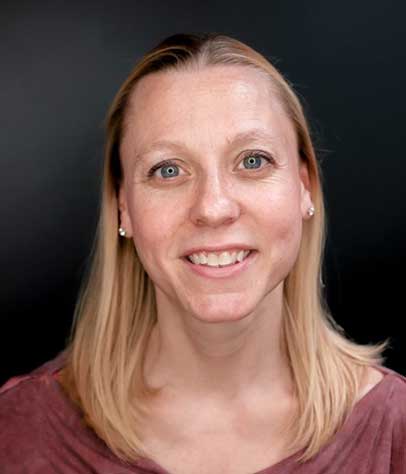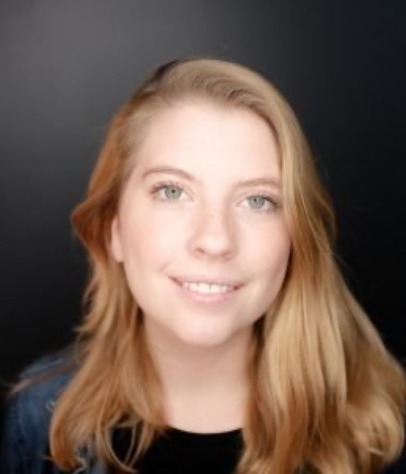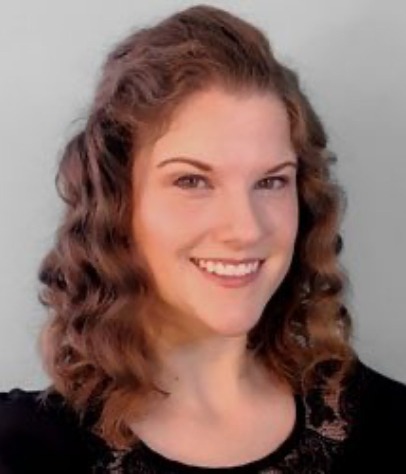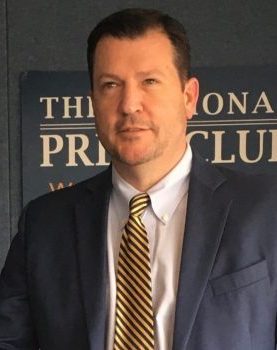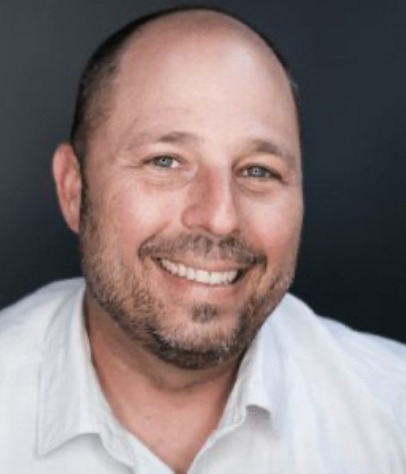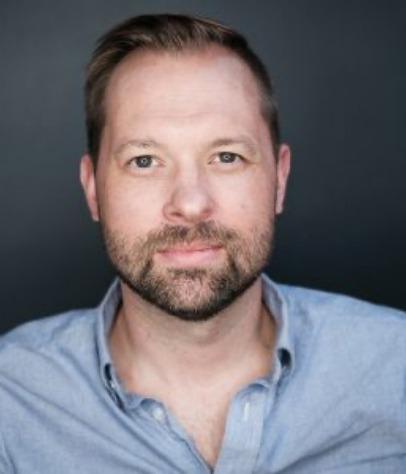Boyd Huppert is a storytelling legend. The Minnesota TV veteran has worked in tandem with award-winning photojournalists to tell human-driven stories for decades in the Land of 10,000 Lakes (Minnesota), hence the name of his long-running feature story series on KARE-11, “The Land of 10,000 Stories.”
In the spirit of Charles Kuralt’s series on CBS, “On the Road with Charles Kuralt,” Huppert has made a career of finding the best in people and telling their stories in ways that are enlightening, entertaining, emotional, and fun. He’s a master at pacing, reveals, and character development. He’s one of the best reporters in TV news today, always finding ways to write fresh, engaging copy with never too much or too little. It’s always on point and surprising in satisfying ways.

The duo of photojournalist Jonathan Malat, formerly of KARE11-TV in Minneapolis who is now at TV2 in Denmark, and reporter Boyd Huppert of KARE11-TV, are the Joseph A. Sprague Memorial Award recipients. Photograph by Ben Garvin
“Duck in a truck” originally aired on KARE 11 in November of 2008. Reporter Boyd Huppert and photojournalist Jonathan Malat met up with Joe Mansheim and his duck “Frank.”
Years ago when I was a TV photojournalist, I dreamed of working with Boyd as many of my camera colleagues did because of his dedication to the teamwork of storytelling. Although Boyd is a writer and on-camera personality, he is just as concerned with working in lockstep with the photojournalist and helping them capture the moment as he is with writing. But it doesn’t stop there. He works with the news director and producers as well to make sure that the entire presentation tells the story, even the anchor intros. It’s why his stories have won so many awards and touched the hearts of many Americans. He’s a master of the craft.
So why am I sharing these tips? I used to teach storytelling at conferences for the National Press Photographer’s Association alongside Boyd and admired his teaching just as much as his storytelling. He would occasionally hand out tip sheets that I’ve kept for years and referred back to on many occasions for a little inspiration or guidance. And these 7 Habits of Highly Effective Storytellers are so simple, yet so effective. Over the years these tips and others have steeped our storytelling culture at ELM. We strive to apply them when possible to our work every day. Thank you for the years of guidance, Boyd (whether you knew it or not)! With his permission, here they are.
1. Find Focus
Carpenters don’t pound nails without a blueprint, nor should storytellers pound computer keys without a focus. Effective reporters and photographers [directors, producers, DPs] work as a team to identify characters, emotions, and concepts that will tie together otherwise disconnected elements of a story. Focus helps storytellers determine how stories will open, close, and transition between points.
2. Maximize the Surprise.
Surprises are the “gold coins” that reward viewers for investing time in your story. Effective storytellers identify their surprises before writing and editing. They understand reporters [directors, producers, writers] are responsible for the set-up, while the punch line (a revealing soundbite, picture, or pop of natural sound) belongs to the photographer/editor.
3. Pace Yourself.
For good or for bad, every story has a pace. Effective storytellers use the tools at their disposal to control their story’s throttle. Want to convey urgency? Use quick pops of natural sound, brief soundbites, and shorter tracks [narration or exposition]. Trying to create a somber mood? Slow down your read, lengthen tracks and soundbites, and let natural sound breathe.
4. Keep Interviews Active.
Conduct fewer interviews during your shoots and have more conversations. Use wireless microphones and talk to people while they are involved in their activities. Change focal lengths and framing often. Effective storytellers know that an interview becomes stale if the shot never changes.
5. Develop Characters.
The subjects of our interviews can only become characters if we use our skills to develop them. Effective storytellers search for emotions, motivations, and details that will help define their characters. First impressions are important; look for the “handshake” shot that gives viewers some insight into a character’s personality the first time he or she appears on screen.
6. Action Needs Reaction.
If a tree falls in your story, does it make a sound? Not a very loud one unless someone is there to react to it. Effective storytellers understand the real energy isn’t in the flames, but in the people who gather to watch the fire.
7. Find the layers.
Good stories don’t dump on viewers all at once; they reveal themselves one important detail at a time. Effective storytellers identify the layers of their stories then write and shoot the transitions that will carry viewers from one level to the next.

About the Author
Darren Durlach | Director & EP
Darren Durlach is an Emmy Award-winning filmmaker, commercial director, and screen writer based in Baltimore, MD. He’s directed for networks like NBC, Discovery, and Nat Geo as well as clients like Microsoft, Audi, Payactiv, Hollister, Callaway and more. The work he’s best known for gravitates towards deeply personal stories couched in a bold, realist visual style. His goal is to give the audience chills. His favorite part of the process is collaboration and discovery. He loves the ‘a-ha’ moments that spontaneously combust during script analysis or tech scouts or on set when everyone is bringing ideas and the energy is frothy. EVERY part of the process is fun, and grueling, and contributes to the film.





